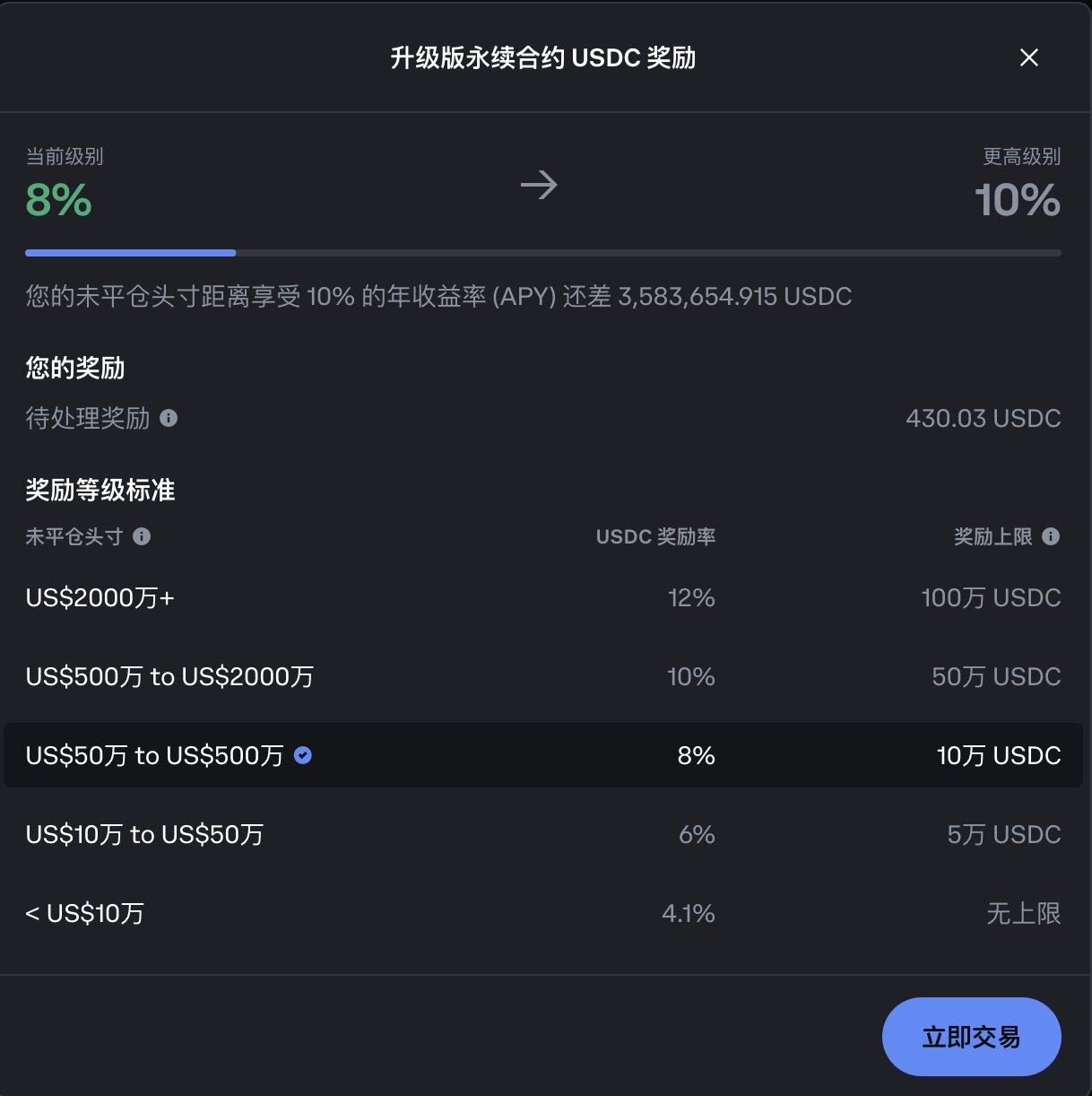The barriers between “trading and interest-earning” have been broken down, and the CEX financial management paradigm is
Author|Azuma ( ゆーすけ )

Today, a piece of news about ” Coinbase updating its derivatives rules to provide a gradient subsidy for USDC used as contract collateral, with the highest annual subsidy reaching 12% ” sparked widespread discussion in the community.
Chinese KOL benmo.eth first revealed this update on X, commenting, “This product directly competes with funding products like BFUSD and USDE. With low fees, the rewards are already being squeezed out. For example, if you have a 1 million USDC margin and open a 2 million BTC long position, your 1 million USDC will automatically earn an 8% annualized return. If you have a 10 million USDC margin and open a 20 million USDC contract, your 10 million USDC will earn a 12% annualized return. Amidst increasingly fierce competition in derivatives, Circle is partnering with Coinbase to offer direct cash subsidies to expand its market share. Circle is targeting USDC in the derivatives market. This move has significant strategic significance and has further deepened the competitive landscape of the funding market.”

As stated, this update by Coinbase is actually benchmarked against Binance’s BFUSD, but since it does not involve currency exchange, the model is relatively more direct.
BFUSD, the so-called “incentive margin asset” launched by Binance for its dedicated contract users at the end of last year, allows users to earn continuous returns simply by holding BFUSD. Users can also use the stablecoin as collateral for their contract accounts, enabling them to “earn as they use it.” As shown in the chart below, while BFUSD’s annualized return is currently “only” 5.82%, retrospective data shows that it has exceeded 10% on several occasions.

Coincidentally, OKX has also recently launched a similar function to break down the barriers between trading and financial management , and the model is more radical – it covers spot trading in addition to contracts.
On August 15th, OKX announced the launch of the “Automatic Coin Earning” feature for VIP users. This feature allows users to automatically lend assets in their trading accounts and earn returns, without affecting their collateral and trading margin. Most importantly, this feature also automatically earns coins even when placing orders or using assets as cross-margin . Initially, this feature only supports USDT and is applicable to spot, futures, cross-currency margin, and portfolio margin accounts. Additional currencies will be added over time.

For a long time, major centralized exchanges have generally adopted a partitioned account design to isolate risk— trading accounts and financial management accounts are independent of each other (even within trading accounts, spot trading and futures trading are also independent of each other). While funds can be transferred between different accounts without any hindrance, this isolation design prevents users from balancing “trading” and “financial management.” In general, users can choose to “trade when they need it, financial management when they don’t,” but when placing orders and opening positions, they must forgo financial management returns during the corresponding period.
In short, this is a common decision dilemma faced by exchange users: should assets be kept in trading accounts, ready to capitalize on market opportunities? Or should they be transferred to wealth management accounts to earn steady returns? Pursuing returns means limiting the flexibility of funds for a certain period of time; maintaining liquidity inevitably means forgoing potential interest returns.
Although this paradigm has been generally accustomed to by users over the years, habit does not mean perfection. From a product perspective, there is obviously room for optimization.
With leading exchanges like Binance, Coinbase, and OKX launching targeted new features, this long-standing paradigm is being radically overturned. From a user’s perspective, this means the aforementioned “decision-making dilemma” will be overcome, enabling greater capital utilization efficiency and interest-earning potential. From an exchange’s perspective, this may signal the emergence of new product standards, blurring the lines between trading and wealth management accounts. “Trading as wealth management” is expected to become a standard feature of future exchange offerings.
In short, being able to more easily balance trading and financial management is clearly good news for countless exchange users. This is all thanks to the intense competition among exchanges for users and funds. In this ever-evolving trading landscape, whoever can better empower users will win their favor. Looking ahead, as 暗号currency compliance deepens, more and more new players will enter the market, and competition will only intensify. As an average user, I hope “the competition will get more intense.”
この記事はインターネットから得たものです。 The barriers between “trading and interest-earning” have been broken down, and the CEX financial management paradigm is undergoing a major change.Recommended Articles
Related: How to Trade Tokenized Stocks on Solana: A Complete How-to Guide
Before the rise of the crypto industry, few could have imagined that “on-chain” would be so deeply integrated into our daily lives. Crypto technology has completely revolutionized the way people manage their funds, returning financial dominance to users instead of relying on traditional institutions. Today, DeFi has taken another important step – tokenized stocks are officially launched. Solana is a popular public blockchain in the crypto world, known for its high-speed transaction processing capabilities and smooth user experience. Today, Solana is bringing an important pillar of traditional finance into the DeFi world through the innovation of tokenized stocks. Each of these blockchain tokens issued by Backed (such as AAPLx, TSLAx) is backed 1:1 by real US stocks. This article will take you through the basic concepts of tokenized stocks, applications…







